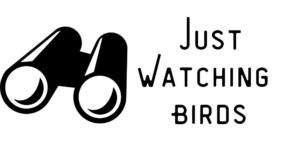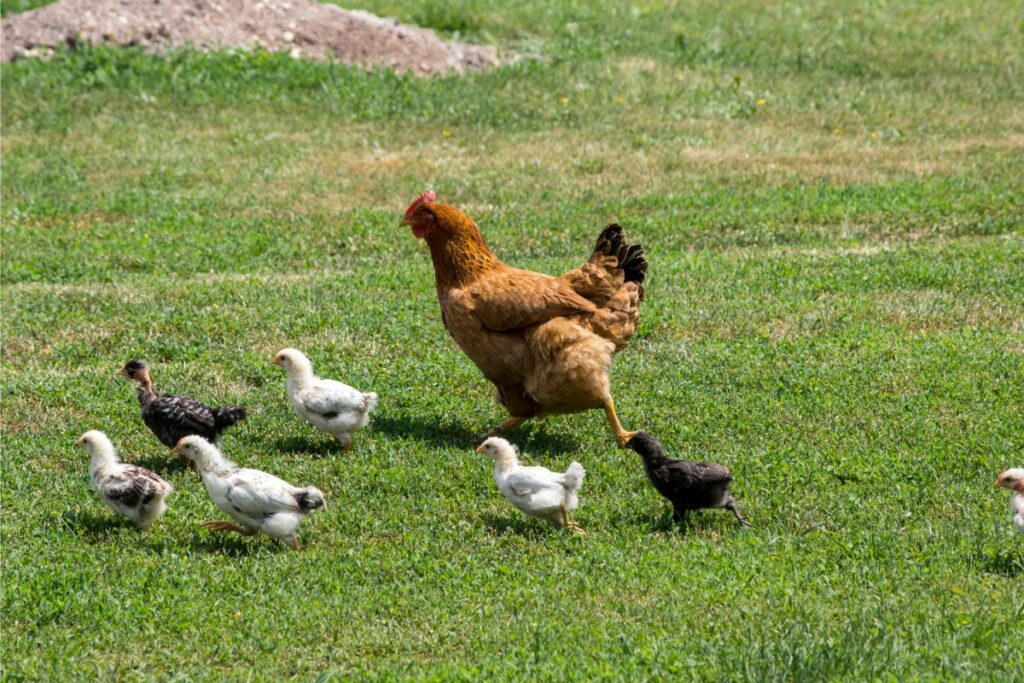As an Amazon Associate, we earn from qualifying purchases with no additional costs for you.
Birds are generally excellent parents, carefully incubating their eggs and tending to their chicks. You may wonder how birds can recognize their babies, especially if they live in colonies.
Birds use calls and the appearance of their babies to identify and recognize them. Baby birds may also have species-specific markings inside their beaks, which the parent recognizes. Calls may also be unique so the parent can find its chick in a colony.
Read further to find out about how birds recognize their babies and each other and why this is important.
TIP: If you want to check out the best pair of binoculars for bird watching, we recommend a pair of waterproof and fog-proof 8 x 42 binoculars like the Celestron – Outland X 8×42 Binoculars (Amazon link).
How Do Birds Recognize Their Babies?
The parent birds recognize their babies by a combination of visual cues and sound. The chicks appear a certain way, and they have species-specific calls. The begging calls of baby birds are very persistent and trigger feeding behavior by the parents.
Besides overall size and shape, the chicks of some bird species also have specific markings to help ensure that the babies are fed by their parents. Different finch species have different markings inside the beak. These colorful marks inside the baby bird’s beak act as a target for where the parent bird should place food.
This video shows Finch babies and their beak markings:
Bird Size And Shape
Birds of different species vary in the size they are when they hatch and their overall shape. Chicks of different bird species also grow at different rates and reach a size typical of their species.
Smaller passerines grow very fast and may leave the nest (fledge) within about 2 weeks of hatching. Larger birds, like eagles, take much longer. Eagles, on average, fledge within about 12 weeks of hatching.
Coloration of Different Birds
A nestling will develop a beak, legs, eyes and feathers of the same colors that match those of the parents. There are variations, however, in coloration. Sometimes, there are genetic mutations causing some white feathering on the bird (leucistic forms) or even albinism (where all pigment is lacking).
Cuckoo chicks are often successfully reared by a host species even though the cuckoo chick looks different from the host nestling.
Top Tip: What happens when a bird’s nest is destroyed? How does this affect eggs and nestlings? Find out in this article.
Bird Calls
The call of a baby bird is often enough to get a parent bird’s attention. Parent birds have a special call they give when calling chicks, including when they are carrying food back to feed the chicks. In some species, finding the chick also relies on recognizing the mate that is caring for the nestling.
The call of the mate is essential in large Emperor Penguin colonies. The parent of a baby penguin can recognize its baby among a large colony of other chicks and parent birds by calling for its mate.
The call of the mate is recognized, and the parents can be reunited with their chick. This ensures that the parent finds its chick and feeds it. This is remarkable when you realize how large and loud penguin colonies are.
Watch a Penguin mom find her chick in this amazing video:
The markings inside a nestling’s beak, when combined with their begging cry, are enough to elicit a response from the parent bird. Nestlings of different species each have unique begging calls. The sound these chicks make is a way parents can recognize their young and know that these young birds are hungry and need food.
A cuckoo chick looks different, but it also has a different call from the host chick. One wonders, then, why a host bird often accepts and feeds the chick of a cuckoo. The cuckoos are brood parasites.
TIP: Knowing how to spot the birds in your yard is key to enjoying visits from your winged friends as much as possible! The best sources are trusted books, I recommend using the following (Amazon links):
– National Geographic Field Guide to the Birds of North America
– National Audubon Society Birds of North America
Brood Parasitism
There are some species in the bird world that are brood parasites. This means that the bird lays its egg in another species’ nest and leaves the rearing to the other bird species.
Brood parasitism is typical of cuckoos, but they are not the only birds that use this reproductive strategy. Brown-headed Cowbirds, Indigobirds, and Honeyguides also use brood parasitism for reproduction.
It may be surprising that brood parasitism is successful as a reproductive strategy because birds should recognize that an egg is not their own. However, brood parasites can sometimes lay eggs that closely resemble the host species.
There is some research that suggests that cuckoos may destroy the nest of a host bird if their egg is rejected. It may be a trade-off for the host species to rear the cuckoo and then try again with its own clutch.
This video explains the evolution of brood parasitism in birds:
What Is Imprinting?
Imprinting is the process by which a baby bird recognizes its parent. This is how the baby bird knows who to beg for food from.
The first bird the baby bird sees when it hatches is whom it imprints on. Imprinting helps the bird to learn how to be a bird. In other words, it will follow the parent bird and copy what the parent bird does. This is integral for the young bird to learn how to find food and survive in the wild.
One of the reasons it is so harmful to rear baby birds for release is that it is very difficult to prevent the baby bird from imprinting on the human caregiver.
A bird imprinting on humans will be unlikely to survive in the wild on its own as it will not have learned from another bird how to forage and avoid predators.
My Favourite Equipment for Bird Watching
Bird watching is one of the least expensive hobbies out there, but you still need some equipment to get the most out of it.
The essential equipment to start bird watching is a pair of binoculars. My preference is 8 X 42 binoculars. The number 8 is how much the magnification is, while 42 is the field of view in millimeters of the lenses.
A pair of waterproof and fog-proof 8 x 42 binoculars like the Celestron – Outland X 8×42 Binoculars on Amazon is an excellent choice for both beginners and experts.
In time, you can choose more expensive models and also opt to buy a spotting scope like the Celestron Ultima 80 on Amazon.
These are a lot more expensive compared with binoculars though, so if you are only a beginner, start with binoculars first. A spotting scope is only helpful for birds far away, such as out on a pond or seashore.
There are a few rules or guidelines you should abide by as an ethical birder. These are listed below.
- Do not enter private lands without prior permission from landowners.
- Follow all the rules in refuges and reserves, including cleaning up any garbage from your campsite.
- Do not disturb birds on nests.
- Do not use apps and play songs to call up birds when they are hungry, tired, and breeding during spring and summer.
Conclusion
Birds can recognize their babies through a combination of cues, including visual and auditory. The bird’s babies will appear a particular way and have specific markings and calls. Baby birds also have a unique call that the parents can recognize.

